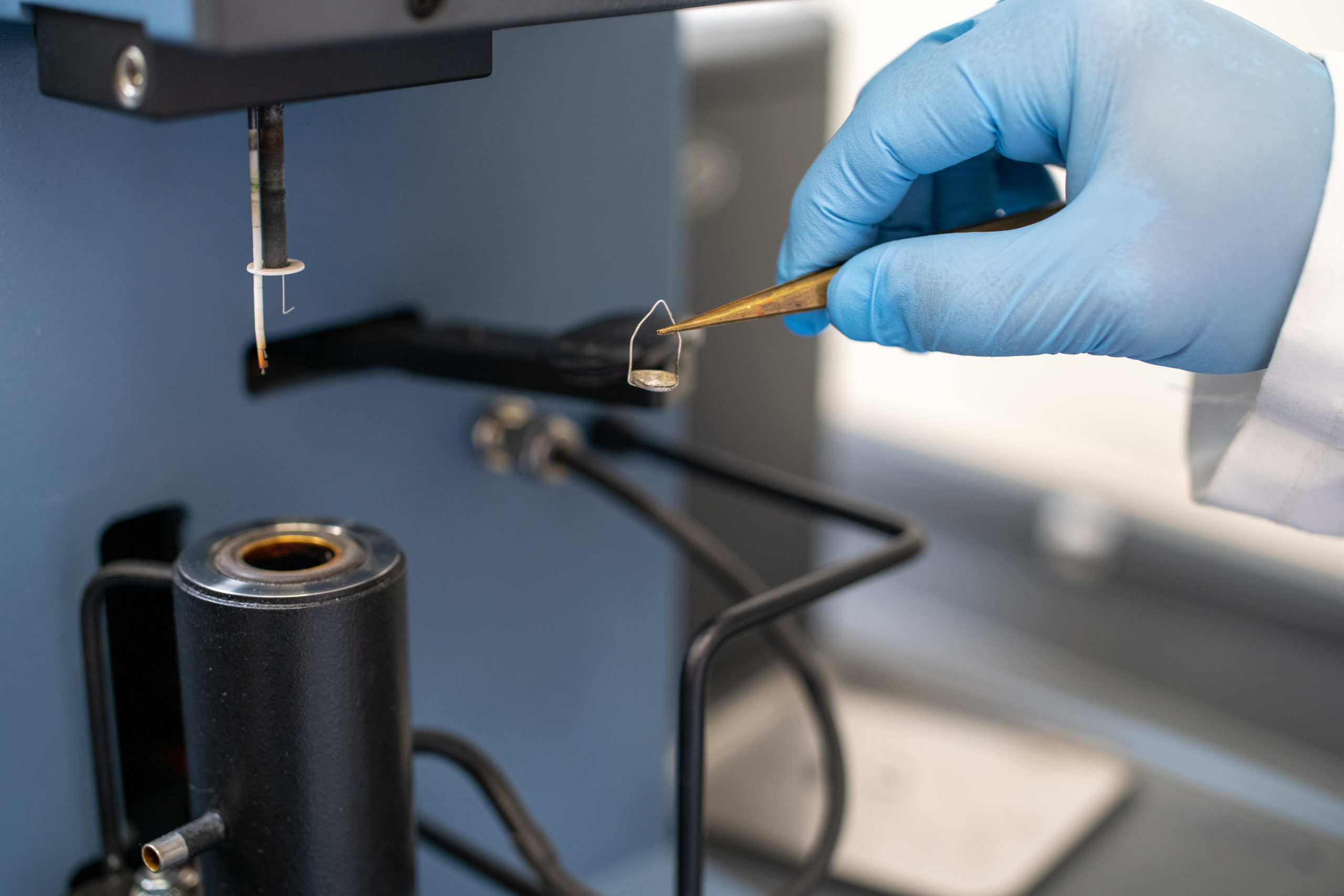-Techniques-
TGA Analysis
Background
Thermogravimetric Analysis (TGA) is a thermal analysis technique involving the determination of the change in weight of a sample as a function of temperature and/or time of heating.
Weight loss information is useful in the characterization of materials, such as polymers, soils, or adhesives, and in problem solving. The TGA instrument used at Impact Analytical is a TA Instruments Q50, which is ideal for projects in basic research or production support. The instrument has an integral mass flow control, gas switching capability (nitrogen or air), and superb software which provides quality results for each analysis. The TGA can be used to determine polymer composition (organic and inorganic (filler) content), thermal stability, degree of hydration, and level of residual solvent or moisture.
TGA is performed either in an inert nitrogen environment or in an oxidative environment (air). In certain sample types, different mechanisms of degradation may be present in oxidative and inert environments. Thus, the number of degradation steps and the temperatures at which the steps occur can be studied in different environments.

Process
The TGA instrument at Impact Analytical has been qualified for use from ambient temperature to 1000 °C, in compliance with: U.S. Food and Drug Administration’s (FDA) current Good Manufacturing Practices (cGMP) Regulations, 21 CFR Parts 210 and 211, and the United States Pharmacopeia (USP), General Chapters <891> Thermal Analysis. This instrument is capable of measuring using just a few milligrams of sample. Samples can be analyzed in accordance with various standard methods including:
- ASTM E1131
- ASTM E1868
- ASTM E2008
- ASTM D6370
Examples of other studies suitable for a TGA include:
- Oxidative stability
- Decomposition kinetics
- Copolymer or polymer blend characterization
- Polymers for the presence of fillers, and additives such as flame retardants
- Polymer degradation, including under oxidative environments
- Ash content
Related Whitepapers
Whitepaper: Thermal Analysis with Pharmaceutical Applications
May 23, 2017
By Karen Griffin
Ready to Get Started?
Give us a call and speak with an actual scientist.

